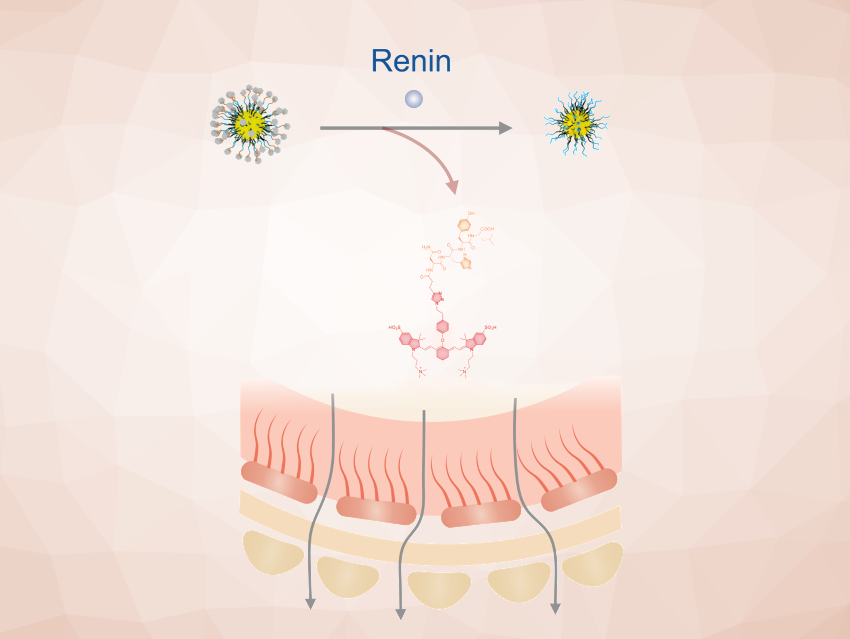Hypertension, or high blood pressure, can be an important health issue, increasing the risk of, for example, stroke, cardiovascular diseases, or kidney disease. Existing drug treatments can be successful, but not all patients respond well to the antihypertensive drugs used and/or the doses prescribed. Finding out which patients are “responders” and “non-responders” could allow for improved, personalized treatments.
The Renin-Angiotensin System (RAS) in the body plays an important role in blood pressure regulation. The enzyme renin is an aspartyl protease mostly released by certain kidney cells. It converts angiotensinogen to angiotensin I, which is then converted by angiotensin-converting enzyme (ACE) to angiotensin II. Angiotensin II causes blood vessels to constrict and, thus, leads to an increase in blood pressure. Renin is the rate-limiting enzyme in this cascade and is essential for regulating RAS activity. Based on plasma renin activity levels, hypertension can be divided into two subtypes (low-renin hypertension and medium-/high-renin hypertension) that respond differently to different types of blood pressure drugs. However, measuring plasma renin activity can be challenging due to its low concentration.
Jiaguo Huang, Sun Yat-Sen University, Guangzhou, China, and colleagues have developed activatable renin nanoprobes (ARNs) for non-invasive in-vivo imaging and ultrasensitive in-vitro measurements of renin activity levels (pictured below). The probes consist of a gold nanocluster core, which is functionalized with a zwitterionic cyanine (ZWCY) as a fluorophore, using a thiol-functionalized peptide linker that can be cleaved by renin.

In its initial state, the probe is non-fluorescent because the gold nanocluster core acts as a quencher. In the presence of renin, the fluorophore is released and “turned on”, leading to near-infrared fluorescence (NIRF). This can be used for non-invasive imaging of renin activity in vivo, which the team demonstrated in a mouse model. The probe can also be used in vitro for the analysis of urine samples. The nanoprobes provide an approach to the ultrasensitive detection of renin, which could be useful for improving anti-hypertension treatment as well as for screening new anti-hypertensive drugs.
- Molecular Imaging of Renin Activity using Fluorogenic Nanoprobes for Precision Antihypertensive Therapy,
Ya Zhou, Weiping Xu, Bankang Ruan, Lijuan Zhu, Yuyan Jiang, Hui Cai, Jiaguo Huang,
Angew. Chem. Int. Ed. 2024.
https://doi.org/10.1002/anie.202416002



